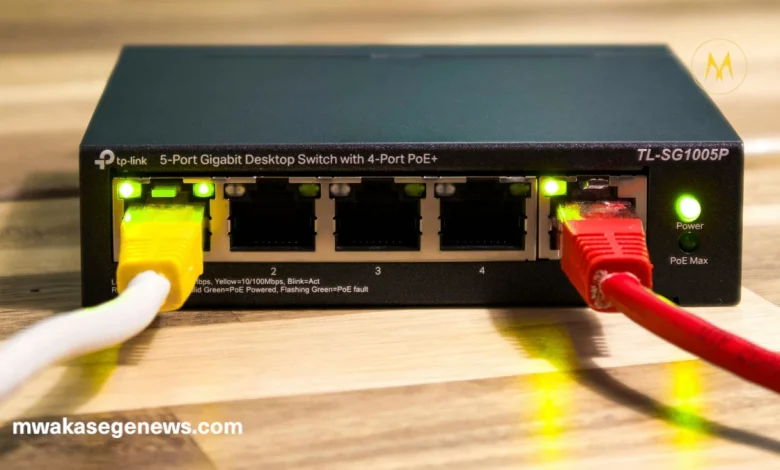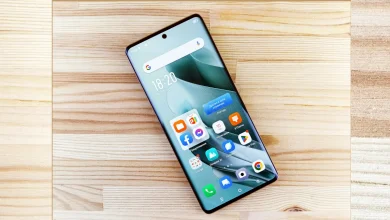The Rise of 5G: What It Means for the Future of Global Connectivity
Exploring how 5G technology is redefining global communication, powering innovation, and shaping the digital future.

Introduction
The fifth generation of wireless technology, known as 5G, is no longer a concept of the future. It is rolling out across cities and countries, promising a major shift in how people, businesses, and machines communicate. With significantly faster data speeds, lower latency, and the ability to support billions of connected devices, 5G is poised to change the digital world as we know it.
This article explores the real-world impact of 5G on global connectivity, what industries will benefit the most, and how it could influence our daily lives.
What Makes 5G Different from Previous Generations?
Unlike its predecessors, 5G is not just an upgrade in speed. It brings a complete transformation in network architecture. While 4G made mobile streaming and browsing smooth, 5G opens the door to fully immersive and real-time experiences.
Key improvements include:
- Data speeds up to 100 times faster than 4G
- Ultra-low latency, reducing lag to near-zero
- Greater bandwidth for more connected devices
- Improved reliability and energy efficiency
These features make it possible for advanced technologies like autonomous vehicles, remote surgeries, and smart cities to function at scale.
Industries Being Revolutionized by 5G
ALSO READ: Is Your Phone Spying on You? Here’s the Truth
1. Healthcare
5G allows doctors to consult and even operate remotely through high-quality video and robotic assistance. Wearable health devices will also provide real-time data for preventive care and faster diagnoses.
2. Transportation
Self-driving cars depend on instant communication with other vehicles and infrastructure. 5G makes this communication more stable and faster, improving safety and efficiency on the roads.
3. Manufacturing
Smart factories powered by 5G will benefit from real-time monitoring, predictive maintenance, and enhanced automation. Machines will “talk” to each other without delay, increasing productivity and reducing costs.
4. Education
Remote learning becomes more interactive with virtual and augmented reality tools. Students in different parts of the world can access live, immersive educational content without lag.
5. Entertainment and Gaming
Streaming 4K and 8K videos or playing cloud-based games will be seamless. Virtual reality (VR) and augmented reality (AR) will also gain traction due to the fast and stable connectivity.
5G and the Internet of Things (IoT)
The growth of IoT devices depends heavily on fast and reliable connections. From smart homes to connected agriculture, 5G acts as the foundation for billions of devices to function in sync.
Examples of 5G-powered IoT:
- Smart refrigerators ordering groceries automatically
- Sensors monitoring soil and weather conditions in farming
- Real-time tracking of packages and fleets in logistics
By 2030, IoT devices are expected to exceed 25 billion globally, and 5G is essential to keeping them connected.
How 5G Impacts Developing Countries
Many developing regions see 5G as a chance to leapfrog outdated infrastructure. Instead of building traditional networks, they can deploy wireless 5G solutions to bridge the digital divide.
However, challenges remain. These include:
- High costs of infrastructure
- Limited access to 5G-compatible devices
- Lack of local technical expertise
Still, pilot projects are already showing how rural health clinics, schools, and markets can benefit from faster and more stable internet.
Security and Privacy in a 5G World
With great power comes great responsibility. 5G’s capacity to connect billions of devices increases the risk of cyberattacks. Governments and tech companies must collaborate to create stronger security protocols.
Main areas of concern:
- Data breaches through connected devices
- Network hacking targeting critical systems
- Privacy risks with location and activity tracking
Ongoing advancements in encryption and AI-driven threat detection will play a vital role in managing these risks.
Environmental Impact of 5G
ALSO READ: AI Tools That Will Blow Your Mind in 2025
There’s a common concern that 5G will consume more energy. While that’s partially true during the rollout phase, 5G is actually designed to be more efficient in the long run. Networks will use less power per bit of data transferred compared to 4G.
In addition, 5G supports smart energy grids, smart buildings, and optimized transportation—helping reduce overall carbon emissions over time.
Global Race for 5G Leadership
Countries are racing to lead in 5G deployment, with major players like the U.S., China, South Korea, and European nations investing billions. Leadership in 5G is seen as a gateway to future economic and technological dominance.
Companies like Huawei, Ericsson, Nokia, and Qualcomm are also in fierce competition to provide the hardware and software that will power 5G globally.
Final Thoughts
5G is more than just faster internet—it’s the foundation for the next phase of digital evolution. It enables industries to innovate, governments to connect with citizens more efficiently, and individuals to experience technology in real time.
The road ahead is still unfolding. Issues like regulation, affordability, and security must be addressed. But the potential for growth, innovation, and inclusion is immense. As 5G continues to expand globally, it will unlock new possibilities that will shape the future for decades to come.
FAQs
5G offers significantly faster speeds, lower latency, and supports more connected devices simultaneously compared to 4G.
5G is currently being rolled out in major cities around the world, but full global coverage may take several more years.
Q3: Can 5G cause health problems?
According to scientific research and organizations like the WHO, 5G is safe when operating within international guidelines.
Q4: What devices support 5G?
Most new smartphones, tablets, and IoT devices released since 2022 support 5G. Older devices may not be compatible.
Not entirely. 5G complements Wi-Fi by providing reliable mobile connectivity, but both technologies will continue to coexist.








